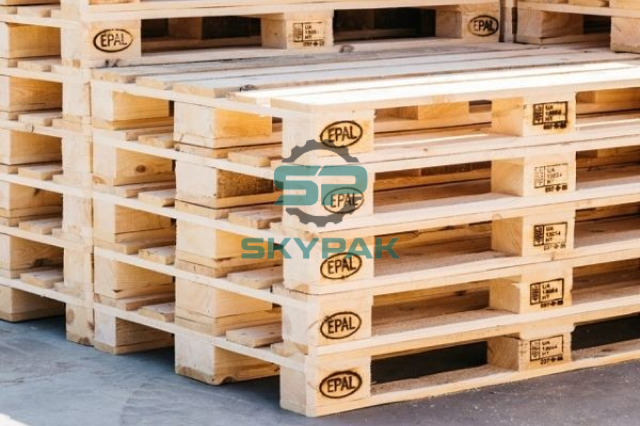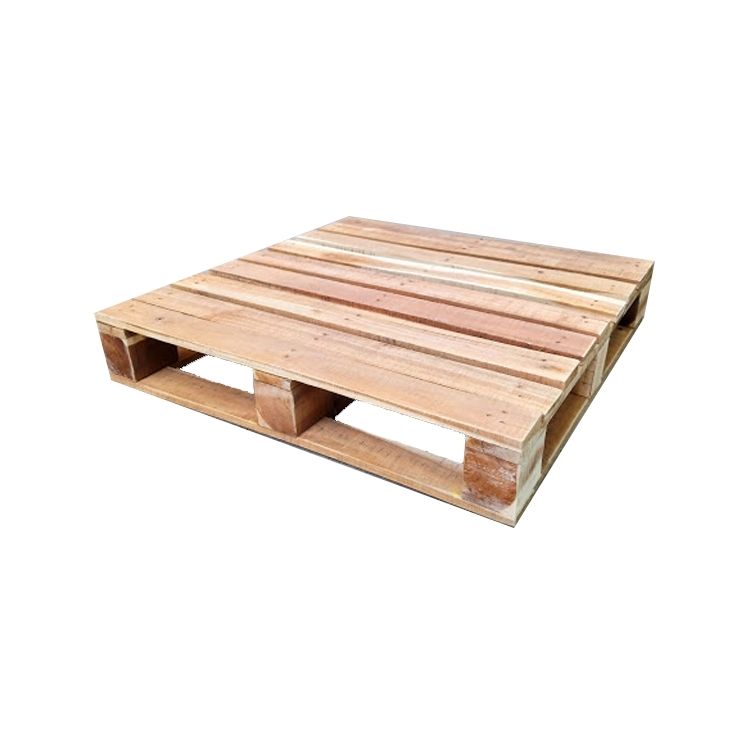Pallets are a popular freight packaging option today. Pallets are used in the logistics of transportation, from storing items in warehouses to moving goods easily during transportation. Pallets are designed as a platform for transporting, handling, and unloading both products and materials. Price of wooden pallets can be quite expensive, however, they significantly reduce the risk and potential damage to shipments making pallets a must-have in the shipping industry. To learn more about the factors that affect the price of wooden pallets, continue reading the article below.

What factors does the price of wooden pallets depend on?
Wood Type
Pallets are products made up of many different materials. This means that the price of pallets will directly depend on the materials used to manufacture them. Since wood is the most common material in assembling wooden pallets, the cost of the wood significantly affects the overall price of wooden pallets. Wooden pallets can be manufactured from pine or melaleuca/acacia. In which the price of wooden pallets assembled from pine wood will be higher than that of Melaleuca and acacia. Moreover, the quotation of imported, sawn and processed pine wood pallets in foreign countries is also very different from domestic pine wood.
Size of wooden pallets
The dimensions of different pallets also require different amounts of lumber, which directly affects the price. Common sizes of Melaleuca/acacia wood pallets are:
- 1000x1000x150 mm
- 1100x1100x150 mm
- 1200x800x150 mm.
For pallets meeting European standards, the standard size is 800 x 1200 x 144 mm. This is one of six pallet sizes approved by the International Organization for Standardization (ISO). This pallet is also known as EPAL pallet or EUR Pallet, or Euro pallet.
However, the above are just common, widely used pallet sizes. Customers can still request different sizes and customizations to suit their needs. Pallet size also affects the amount of wood needed to produce and affects the price of wooden pallets
For example, 4-way pallets can be more expensive than 2-way pallets because they require more materials and have a more complex design. Each type of pallet is custom designed to transport a wide variety of products and requires different amounts of wood and materials.
Number of pallets
The number of pallets also plays an important role in the price of wooden pallets. Customers who order wooden pallets in large quantities will receive more discounts. Depending on the location, shipping over long distances can also affect the price of wooden pallets.
Pallet Status
Another factor that affects the price of wooden pallets is the form and condition of the pallet. New pallets will certainly cost more than old, used wooden pallets. At the same time, customers will have to spend more money if they have requested to plan smooth pallets or print brand names on pallets…
International Certifications

The final factor affecting the price of wooden pallets is the international certification ISPM-15 (International Standard for Phytosanitary Measures No. 15) and EPAL (European Standard Pallet Manufacturing License issued by the Association of Southeast Asian Nations). European Pallet -The European Pallet Association level).
Especially, for businesses that need to transport goods and products to foreign countries, international certification is an extremely important and indispensable factor.
The cost of testing and issuing these types of certifications is very high. Therefore, they greatly affect the price of the finished product pallet.
All the above factors, including wood type, size, quantity, status, and international certification are the basis for manufacturers to price pallets. To receive the most specific and accurate pallet quote, customers need to provide information about:
- Wood Type
- Amount
- Detailed drawings (if any) or basic information on the dimensions of the pallet.
- Additional requirements: planning or vacuole, ISPM-15 HT or MB certification, EPAL certification, printing on pallets…










